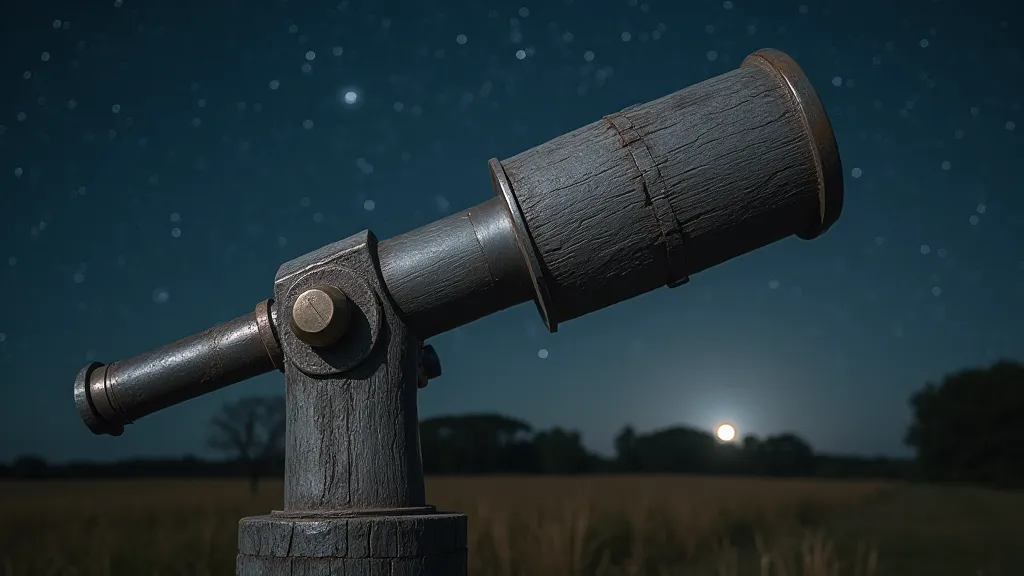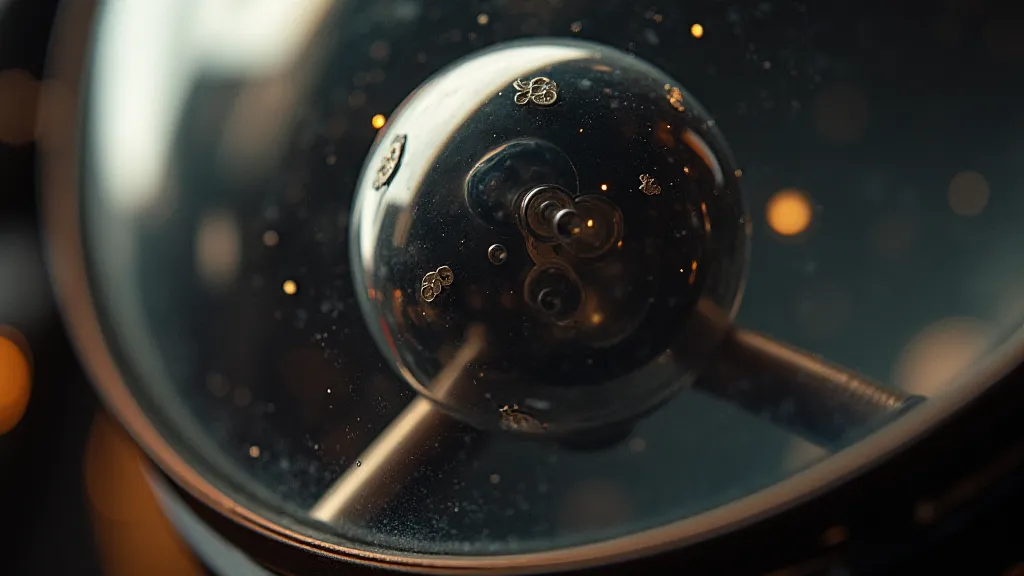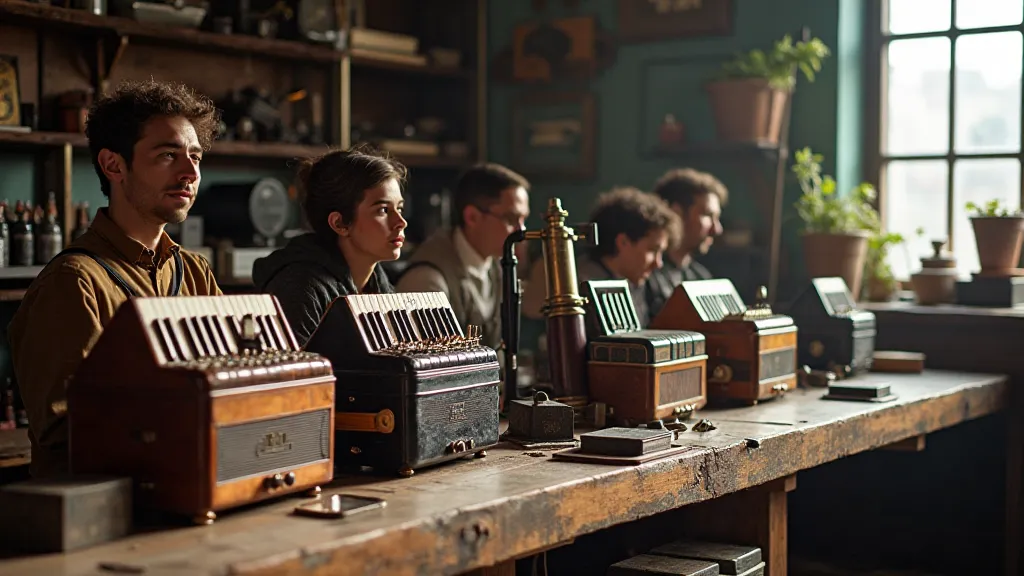Dobsonians: The Soul of Observing – A Path to Cosmic Intimacy
There's a particular resonance that comes with holding something old, something crafted by hands – a feeling that transcends mere function and enters the realm of history. I find that feeling profoundly in antique accordions, their bellows whispering stories of cafes and celebrations, of journeys and laments. It’s a similar feeling that strikes me every time I look at a Dobsonian telescope. While one plays music, the other reveals the silent majesty of the universe, but both are testaments to human ingenuity and a longing for something beyond ourselves. The Dobsonian embodies a similar philosophy – a rejection of needless complexity in favor of a direct, visceral connection to the cosmos.
The story of the Dobsonian is intrinsically tied to a single man: John Dobson. A man who, in many ways, single-handedly revived amateur astronomy. Born in Los Angeles in 1934, Dobson was a self-taught engineer and amateur astronomer with a deeply unconventional approach. He wasn’t interested in the high-tech, precisely manufactured telescopes of the era. He wanted something simpler, something more accessible – something that wouldn't break the bank. He was inspired, reportedly, by early 20th-century telescope designs, particularly those championed by amateur astronomers like W.W. Collins. Dobson's innovation wasn’t a revolutionary invention, but a synthesis of existing ideas, elegantly combined into a robust and cost-effective design.

The Genius of Simplicity
The brilliance of the Dobsonian lies in its utter simplicity. It’s essentially a Newtonian reflector telescope (a mirror-based design) mounted on a very simple alt-azimuth base – meaning it moves up and down (altitude) and left and right (azimuth) like binoculars. No complex equatorial mounts to learn or fuss with. This design drastically reduces manufacturing costs, making large aperture telescopes affordable to the average amateur. The base is typically constructed from plywood or MDF, and the rocker box – the part that swivels – is usually lined with felt to allow smooth movement. The mirrors are the heart of the system, and Dobson emphasized using affordable, well-figured mirrors, often sourced from relatively inexpensive manufacturers.
Consider the craftsmanship inherent in even a basic Dobsonian. While mass-produced today, the original Dobsonians – and many built today by enthusiasts – are often built by hand. There's a palpable feeling of connection to the maker, a sense of pride in the materials and the skill involved. The precision of the felt lining, the careful alignment of the mirrors, the satisfying heft of the wooden base – these are all testaments to a dedication to quality that often gets lost in the age of disposable technology. It’s the same feeling I get when I examine the intricately carved bellows of an antique accordion, or the meticulous hand-soldering of its reeds. There's a story in the details. Understanding how these intricate components function and interact can deepen your appreciation for both instruments, just as understanding the mechanics of a Dobsonian enhances the observing experience.
A Community Forged in Starlight
Dobson didn't just create a telescope; he created a movement. He famously handed out plans for his design at amateur astronomy club meetings in the Los Angeles area, encouraging others to build their own. This sparked a wave of DIY telescope building that spread across the United States and beyond. The "Dobsonians" – as they became known – were a diverse group, united by their passion for the night sky and their appreciation for simplicity and affordability. They were often self-taught, sharing knowledge and helping each other build and improve their telescopes.
This communal aspect is a critical part of the Dobsonian experience. It’s about sharing the wonder of the cosmos with others, about helping newcomers learn the ropes, about celebrating the beauty of the universe together. The feeling of camaraderie amongst Dobsonians is tangible, a shared understanding of the profound connection we have with the night sky. It’s a more intimate and engaging experience than simply staring through the eyepiece of a commercially-produced telescope. The careful placement and orientation of components, the alignment of the optics – these are all aspects that demand attention and foster a deeper understanding of the tools we use to explore the universe. Much like a cartographer meticulously charting a new territory, a Dobsonian enthusiast carefully assembles and refines their instrument, contributing to a shared legacy of exploration. For those keen to dive deeper into the specifics of astronomical charting, you might find the dance of filters and mount configurations particularly illuminating.

Beyond the Technical Specifications
When discussing telescopes, it’s easy to get bogged down in technical specifications – aperture, focal ratio, magnification. While these factors are important, they pale in comparison to the subjective experience of observing with a Dobsonian. The raw aperture – the diameter of the primary mirror – is what really matters. Dobsonians, due to their affordability, allow amateur astronomers to access large apertures that would be financially prohibitive with other telescope types. More aperture means more light, and more light means you can see fainter objects and see them in greater detail. You can observe the swirling clouds of the Orion Nebula, the rings of Saturn, the moons of Jupiter with a clarity and depth that is truly awe-inspiring.
But it’s not just about what you *see*; it’s about *how* you see it. The simplicity of the Dobsonian allows you to focus entirely on the sky. There's no complicated equipment to manage, no anxieties about tracking or polar alignment. You’re simply present, immersed in the beauty of the cosmos. That’s where the profound sense of connection comes from – a feeling of being a small part of something vast and eternal. Observing the Moon, for instance, reveals a world of subtle shadows and surface features; a deeper understanding of these features, and how they are formed through the interplay of light and geography, can be achieved through careful observation and detailed lunar cartography.
Restoration and Collecting: A Labor of Love
Like antique accordions, vintage Dobsonians often find their way into the hands of collectors and restorers. Finding a used Dobsonian – especially one with a rich history – can be a rewarding experience. Restoring a vintage Dobsonian isn’t about bringing it back to factory-fresh condition; it’s about preserving its character, honoring its history. Often, this involves replacing worn-out felt, re-finishing the wood, and potentially re-coating the mirrors. It's a labor of love, a way of connecting with the telescope’s past and ensuring its legacy for future generations.
Similarly, collecting vintage Dobsonian plans and documentation can be a fascinating hobby. John Dobson's original plans are readily available online, and variations and modifications developed by other amateur astronomers offer a glimpse into the ingenuity and creativity of the Dobsonian community. It's a tangible link to the history of amateur astronomy and a testament to the power of shared knowledge and collaborative innovation. Each modification represents a small step in the ongoing evolution of a beloved instrument, much like the refinements made to musical instruments over centuries.

The Philosophy of Simplicity and Observation
The appeal of the Dobsonian extends beyond its affordability and ease of use. It embodies a philosophy of simplicity, a rejection of unnecessary complexity in favor of a direct and intuitive connection to the cosmos. This philosophy resonates with a deeper human desire to understand our place in the universe, to strip away the layers of abstraction and experience the raw wonder of existence. The feel of the wood, the weight of the optics, the smooth movement of the rocker box – these are all tactile experiences that ground us in the present moment and connect us to the physical world.
The dedication to simplicity also extends to the observing experience itself. With a Dobsonian, there are no distractions, no complicated settings to adjust. It's just you, the telescope, and the sky. This allows for a deeper level of immersion and appreciation, a sense of being truly present in the moment. It’s an opportunity to quiet the mind, to focus on the beauty of the universe, and to reconnect with something larger than ourselves. The mindful approach to observing fostered by the Dobsonian is a valuable lesson in itself, teaching us to appreciate the simple joys of life and to find wonder in the everyday.
The Continuing Legacy of John Dobson
John Dobson’s impact on amateur astronomy is immeasurable. He not only created a revolutionary telescope design but also fostered a vibrant community of enthusiasts who share his passion for the night sky. His legacy continues to inspire generations of amateur astronomers, encouraging them to explore the universe, to share their discoveries, and to embrace the joy of learning. His emphasis on simplicity, affordability, and accessibility has democratized astronomy, making it accessible to anyone with a curious mind and a desire to learn.
The principles that guided John Dobson’s approach – simplicity, affordability, community – remain as relevant today as they were when he first began sharing his plans. As technology continues to advance and telescopes become more complex, the Dobsonian serves as a reminder of the enduring power of simple, elegant design and the importance of fostering a welcoming and inclusive community of learners.
The Soul of Observing
The Dobsonian telescope isn’t just a tool for observing the night sky; it’s a gateway to a deeper understanding of ourselves and our place in the universe. It's a testament to the power of simplicity, a celebration of craftsmanship, and a symbol of the enduring human quest for knowledge and connection. It’s a journey into the soul of observing, a pathway to cosmic intimacy. It is, truly, a joy to behold.





